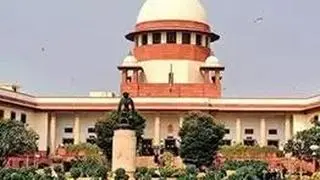The Centre’s flagship Ayushman Bharat health insurance programme has completed two years. But this time, the buzz around the milestone has been low-key, coming at a time when hospitals are coping with the surge in Covid-19 numbers.
Launched on September 23, 2018, in Ranchi, the Ayushman Bharat Pradhan Mantri Jan Arogya Yojana has seen over 1.26 crore hospitalisations, involving a spend of over ₹15,772 crore to cover these healthcare bills. In fact, Health Minister Dr Harsh Vardhan said the two-year milestone is as significant as his involvement with polio eradication efforts in the country.
The National Health Authority’s Chief Executive Dr Indu Bhushan said, at an event to herald the two-year milestone, over 23,311 hospitals were on board the scheme covering over 1,500 procedures. The scheme has generated savings to the tune of ₹30,000 crore, he said.
But the scheme still has ground to cover in terms of being more universal in its coverage, say public health voices, even as private healthcare representatives seek greater dialogue to “iron out the wrinkles”.
Related Stories
Podcast | Two years on, Ayushman Bharat has ground to cover on universal health care
Exclusion
Making a case for universal healthcare, KM Gopakumar with the Third World Network, points out that a bulk of the middle class remains outside the scheme. And the “package system”, where a set number of procedures are covered for reimbursement by the government, leads to further exclusion of ailments and people, he said.
The scheme is the first step towards providing universal healthcare, said Dr Sudarshan Ballal, Chairman, Manipal Health Enterprises. “Not just the Western nations, but even countries such as Thailand have a well-developed healthcare system,” said Dr Ballal, who is also a former president of NATHEALTH, a platform for hospitals, diagnostics, insurance providers etc.
The last six-odd months have been low-key, he admits, as all efforts have been redirected to tackling Covid. But the effort now should be to dialogue with private providers, address their viability problems and encourage more low-cost or no-frills hospitals, upscaling of teaching hospitals, and even private-private partnerships like the one Manipal Health has with the Tata’s hospital in Jamshedpur for clinical training, he said.
Private players ask for more support
In the early days of the scheme, the pricing of procedures had been a major bone of contention for private healthcare providers, including smaller nursing homes run by medical professionals. In fact, Ballal says, large corporate hospitals are still not entirely participating in the scheme for these reasons.
Lauding the concept of wellness centres, he said there should be attention on prevention and greater screening at the primary centres before a patient lands up at a tertiary care hospital. Hospitals will be willing to get more involved if there was a viability-gap funding mechanism to help hospitals support low-cost procedures. Other alternatives that private healthcare providers have been suggesting to the government include a differential pricing of sorts to support cross-subsidisation of those who cannot pay, by those who can.
Patient woes
Patient experiences, though, include difficulties in getting covered when there are repeated procedures, for instance, as in a chemotherapy that has multiple cycles; or when they travel to a different State for treatment. Presently, Odisha, West Bengal and Telangana are not part of the scheme. These are some of the ground realities the scheme will have to fix, so it can deliver the benefit it sets out to provide.








Comments
Comments have to be in English, and in full sentences. They cannot be abusive or personal. Please abide by our community guidelines for posting your comments.
We have migrated to a new commenting platform. If you are already a registered user of TheHindu Businessline and logged in, you may continue to engage with our articles. If you do not have an account please register and login to post comments. Users can access their older comments by logging into their accounts on Vuukle.